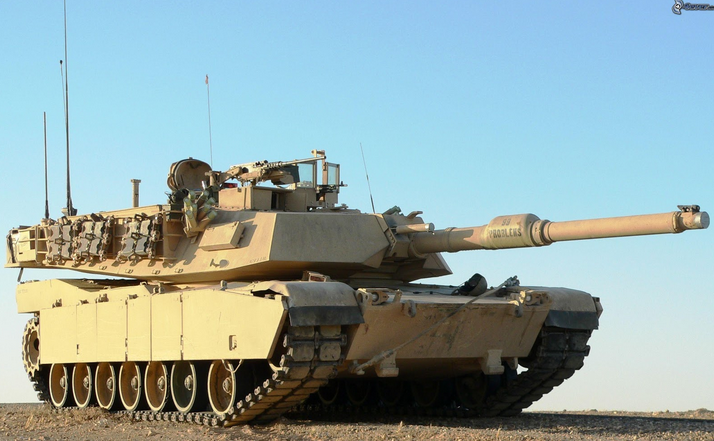[captionpix imgsrc=”https://pvnn.org/wp-content/uploads/2015/09/miketanks.png”]
Since the beginning of the twentieth century, the United States has used its military to defend its allies, first in Western Europe, and then Japan and South Korea. The military serves to deter aggression from other major powers, namely Russia and China. The U.S. monitors every sea-lane around the world, which is critical to the stability of the global economy. The American military now combats dangerous groups, like al-Qaeda and the Islamic State of Iraq and Syria (ISIS), which threaten both American national security and the world.
However, President Eisenhower on January 17, 1961, cautioned the nation that too large a military and too much military spending might be as dangerous as too little. In his farewell address, Eisenhower described the Military-Industrial Complex, “this conjunction of an immense military establishment and a large arms industry is new in the American experience…We must not fail to comprehend its grave implications… the potential for the rise of misplaced power exists and will persist.” [ref]Dwight Eisenhower, “President Eisenhower’s Farewell Address,” Eisenhower Presidential Library, January 17, 1961, accessed September 4, 2015.[/ref] With the United States emerging from a recession, it is clear that reducing the budget deficit is important to our economic health. The vendetta becomes how should the United States balance its military needs within its national budget?
The term “Military-Industrial Complex” specifically refers to the “relationship that can develop between government entities and defense-minded manufacturers. This union can produce obvious benefits for both sides. War-planners receive the tools they need for waging war while defense companies receive lucrative government contracts.”[ref]”What Is the Military-Industrial Complex?” September 4, 2015.[/ref] Since the 1940s, military experts have pressured Congress to fund development of military equipment that may not be needed for national defense. However, Congressional Representatives do not want to appear weak on national security, so they support these increases.
Representatives want military equipment manufactured in their districts. This creates jobs but also leads to unnecessary spending on construction of weapons and equipment that the Pentagon does not want. An example is the M1 Abrams tank. The Abrams is arguably the greatest tank ever designed, but the military already has 6,000 of them in operation, and says it does not need any more. Despite this, upgraded tanks were assembled in Lima, Ohio, in 2013, creating 800 jobs for the district. This cost American taxpayers $294 million. [ref]”Congress Pushes for Weapons Pentagon Didn’t Want,” Military.com, April 20, 2012, accessed September 4, 2015.[/ref]Unnecessary projects like this are fiscally irresponsible and lead to an excess of military equipment that the Pentagon does not need. Some excess equipment is sold overseas, but most of the excess weapons are given to the American police. During the Obama Administration, “according to Pentagon data, police departments have received tens of thousands of machine guns; nearly 200,000 ammunition magazines, thousands of pieces of camouflage and night-vision equipment; and hundreds of silencers, armored cars, and aircraft.”[ref] Matt Apuzzo, “War Gear Flows to Police Departments,” The New York Times, June 8, 2014, accessed on September 4, 2015.[/ref] This has occurred while crime is at its lowest levels since the 1950s. The police arrive at scenes like what occurred in Ferguson, Missouri, with large tracked vehicles, grenade launchers, and heavy machine guns. This aggravated the unrest, leading President Obama to prohibit federal agencies from providing local police departments with certain kinds of military equipment. He explained that, “we’ve seen how militarized gear can sometimes give people a feeling like there’s an occupying force as opposed to a force that’s part of the community that’s protecting them and serving them.”[ref] Evan Perez, “Obama Limits Military-style Weapons for Police Forces,” CNN, May 18, 2015, accessed on September 4, 2015.[/ref]Ending unnecessary military spending, that exists to create jobs, will reduce the militarization of the police and reduce tension between law enforcement and citizens.
Since the attacks of September 11, American military spending has been higher than at any point since World War II. Although defense spending during the Obama Administration is lower than it was under his predecessor, the United States still spends about twenty-percent of its annual budget on defense, more than it spends on Medicare. A solution is to reduce the Pentagon’s budget to what is truly needed by the military. Job creation and building excess weapons should not be the purpose the military budget. We need politicians that judge our nation’s strength not simply by the number of weapons we produce or the number of troops we maintain. We need to heed Eisenhower’s warning; the United States must get its finances in order. We need to balance military spending with our other economic needs. The United States can be weakened by too much debt, “we must achieve both security and solvency. In fact, the foundation of military strength is economic strength.” [ref] Dwight Eisenhower, “Dwight D. Eisenhower Quote,” A-Z Quotes, accessed on September 5, 2015.[/ref]
Take Action:
Sign this petition to support cuts to military spending.




